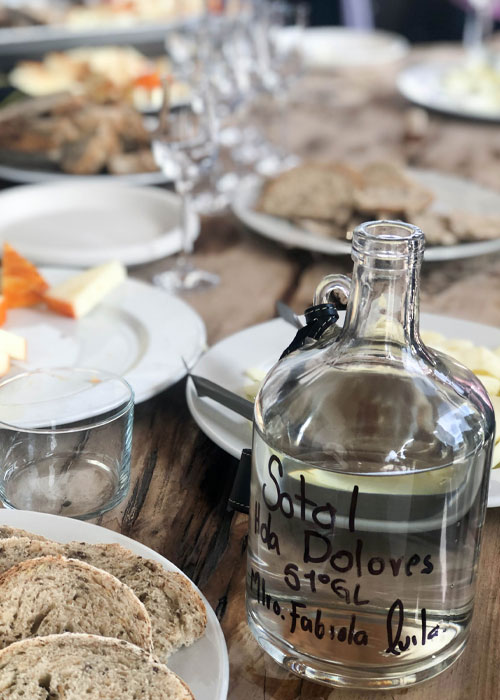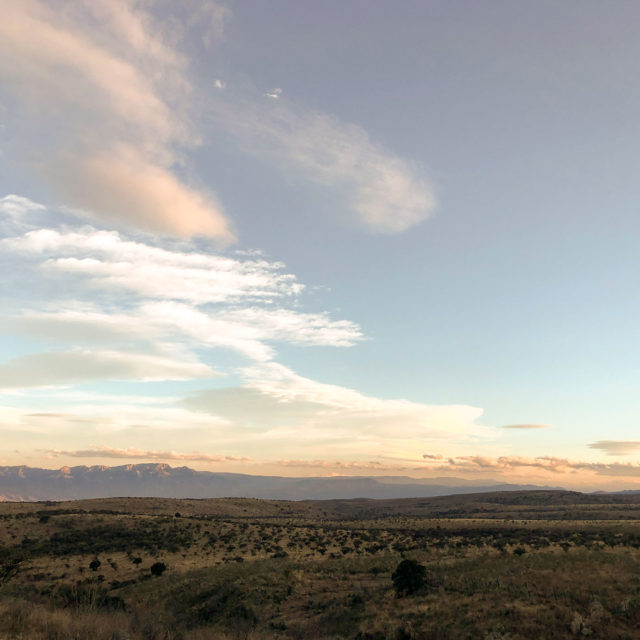At the Lagrimas de Dolores mezcal distillery in Durango, Mexico, distiller Fabiola Ávila pours a sip of mezcal that tastes remarkably like a shot of espresso mixed with cenizo, or Agave durangensis, the state’s native agave. It’s a unique take on a pechuga mezcal, typically distilled with local fruits and poultry, but, in this case, made with coffee beans.
“The best toy Fabiola ever got is that 20-liter still that she uses for experimental mezcal,” says Germán Gutiérrez, whose family owns and operates Lagrimas de Dolores.
Ávila is a scientist, mother of three, and Lagrimas de Dolores’s maestra vinatera, or head mezcal distiller. Drawn to distilled spirits through biochemical engineering, Ávila’s path is atypical for an industry where knowledge is usually passed down from one maestro to the next generation.
“My parents were agriculturalists, I don’t have ancestors that made mezcal — although I did recently discover that my grandmother made pulque,” she says. Even more rare is for the maestro to be a maestra, or female. But Lagrimas de Dolores is pioneering a wave of young mezcal companies approaching the international market. To succeed, they know they’re going to need to do things differently.

In 2018, 92 percent of mezcal was produced in the state of Oaxaca, according to the Consejo Regular de Mezcal (CRM). Almost all the mezcal we see in the U.S. is from Oaxaca, even though there are nine other states within mezcal’s official Denomination of Origin. Continuous production over centuries, and a well-developed infrastructure for production and sales, have put Oaxaca ahead of the pack.
Durango, a northern state located about 600 miles due south of El Paso, Texas, has a long mezcal history. Four hundred years ago, it quenched the thirst of miners who came for the area’s abundant minerals. Durango’s terrain ranges from towering paddle cactus and jagged cliffs, which provided the desert backdrop for 1960s Hollywood westerns, to the Sierra Madre Occidental mountain range, lush with pine and oak forests.
That abundant landscape lends itself to delicious mezcal. Durango’s biodiversity of agaves is one of the largest in the country, and elements like volcanic rock and the local mesquite and Encino oak used to cook the piñas influence the flavors as well.

Distilleries are mostly tucked away in remote areas, producing spirits for local consumption just a few months a year. Up until about five years ago, many urbanites in Durango City, particularly the middle and upper classes, dismissed mezcal as a blue-collar, working man’s drink.
“When my dad started making mezcal people would ask why he wasn’t investing in tequila, but he wasn’t planning on investing in an alcohol company, he was investing in keeping a tradition,” Gutiérrez says.
Gutiérrez’s grandfather always had an affinity for mezcal, but his father was so inspired by the agaves crawling their family cattle ranch that he decided to produce his own. A mutual friend introduced him to Ávila. “I was an undergraduate at the time and was fascinated with all types of fermented beverages, but being from Durango I was attracted to the culture of mezcal,” says Ávila.
Meanwhile, Gutiérrez was living in the U.K., toting bottles from home to drink with friends, and watching the influx of Oaxacan mezcal hit Europe. His father and Ávila got to work converting a 17th-century hacienda into a distillery, and began selling Lagrimas de Dolores locally in 2011. The brand is named for the Hacienda’s patron saint, Our Lady of Sorrows, or La Virgin Dolorosa. When Gutiérrez returned from Durango five years ago, they revamped the branding and started pushing bottles in Mexico City, Europe, and, just a year and a half ago, across the U.S.

Gutiérrez is focused on supporting other vinateros, or distillers, throughout the state, and Lagrimas de Dolores is the first brand to bottle and export a variety of indigenous Durango agave expressions. “It was a really a big leap to be an extremely local product to being in some of the nicest bars in New York,” says Gutiérrez. (Lagrimas de Dolores currently can be found in some of the city’s top Mexican restaurants like Cosme and Claro.)
That leap is exciting for mezcal aficionados and for Durango producers, who are reviving a homegrown tradition while entering an eager market. But the state’s mezcal boom also risks putting pressure on the regional ecosystem and mezcal-producing communities, which could become dependent on entrepreneurs eyeing mezcal like it is Durango’s next gold rush. In just five years, the number of brands in Durango has gone from eight to 60, although about half are officially certified by the CRM, and fewer than 10 are exporting. Leaders like Lagrimas de Dolores are now in a position where the business decisions they make about environmental sustainability and their own business cultures could shape not just the future of local mezcal, but influence how other emerging mezcal regions share their spirits with the world.
“I just did my first lot of sotol, but first I needed to get to know the plant: its aromas, when it’s happy, when it’s not,” says Ávila, who blends a scientific approach with traditional knowledge to best honor her materials. In this case, she was focusing on dasylirion, the desert plant used to produce sotol, one of Mexico’s other treasured spirits. “It’s necessary to have that connection, not just to reflect the plant correctly, but so that the death of the plant isn’t made in vain,” she says.

Ávila points to the complexity of working with plants that take years to grow before they’re ready to be harvested for distilling, which contributes to cycles of agave shortages and increasing concerns about sustainability in tequila and mezcal.
“Our cenizo duranguense takes nine to 15 years to mature,” Gutiérrez says, warning that “there aren’t nearly enough plantations as there are new local mezcal brands.” Years before launching the brand, the Lagrimas de Dolores team was replanting agaves on their ranch nearly the size of Manhattan, semi-cultivating about 50,000 plants a year without clearing native vegetation. This helps avoid erosion in an area prone to desertification.
“Here in Durango we have vast expansions of land that you can easily use for planting agave and you can do it in a very sustainable way; there’s actually no excuse not to,” he says.
Gutiérrez is also the president of a progressive group of companies that promote mezcal from Durango. “If we just worked individually, we knew our brands would always be presented as the rarity, as the other besides Oaxaca,” he says. Their rising-tide-shifts-all-boats mentality created Espiritus de Durango, a network of seven of the most advanced mezcal companies sharing resources and promoting the distinctive qualities of Durango mezcal. Espiritus de Durango’s roster includes two women CEOs, another rarity in male-dominated mezcal.
“Besides for Fabiola, who was already on a path, I think we’re opening some doors,” says Espiritus de Durango member Emily Garcia Montiel, CEO of 618 Mezcal, a semi-industrial, low-ABV mezcal geared toward young cocktail-drinking Duranguenses. “Just by showing other women that I am a woman leading a brand, and that there’s a space for us in the male-dominated sector.”

As the mezcal industry seeks to balance its rapid ascent while preserving centuries-old cultural traditions, the scene at the Lagrimas de Dolores distillery seems like a snapshot of the spirit’s transitional moment. “In the beginning I was only 23 and I was giving instructions to men twice my age, and it often didn’t compute. I had to prove that I knew what I was doing,” Ávila says, adding that “now there’s a lot of mutual respect.” Her husband, who also has a background in biochemical engineering, plays a leadership role at Lagrimas de Dolores, too, specializing in quality control with the brand’s offsite vinateros (“He fell in love with his boss,” Gutierrez explains).
“I’m passionate about my job and I’m passionate about Lagrimas de Dolores, and obviously I love having a family and being a mom,” Ávila says. “It’s a challenge to maintain the balance, but it’s interesting.”
